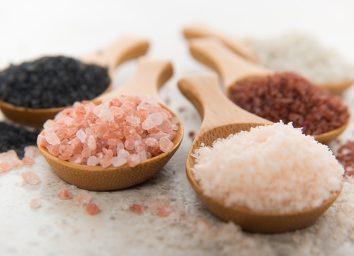24 Ways Nutritionists Say You Can Cut Salt—Without Sacrificing Flavor
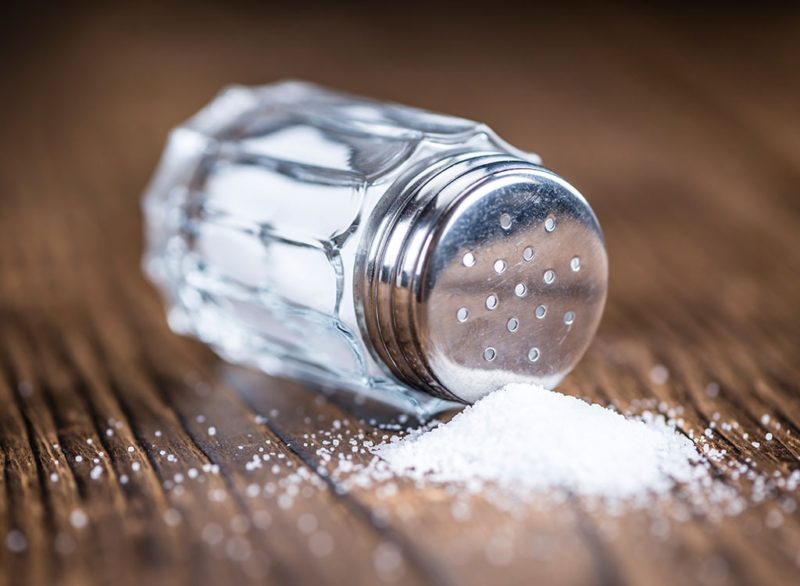
The national dietary guidelines recommend that Americans consume less than 2,300 milligrams of sodium per day, yet most of us take in over a thousand milligrams more! While our bodies require sodium, eating too much of the stuff can lead to high blood pressure, kidney failure, heart disease, and stroke. While getting rid of the salt shaker on your kitchen table is a solid starting point, there are other ways to nix excess sodium from your diet. Below, we’ve compiled nutritionists and health experts’ top tips on how to reduce sodium intake. Use these tips below to eat healthier without sacrificing flavor.
Opt for Herbs and Spices

“When you’re trying to cut back on salt, using herbs and spices is the best approach. You can use a different set of herbs and spices each day to keep meals exciting. Even something as simple as a tomato can be exciting once you add herbs and spices. For example, you can add basil and oregano, tarragon, dill, or a spicy chili powder, and you wind up with four versions of the same tomato with a very different flavor profile.”
— Kelly Krikhely, MS, RD, CDN
Use Flavorful Fats
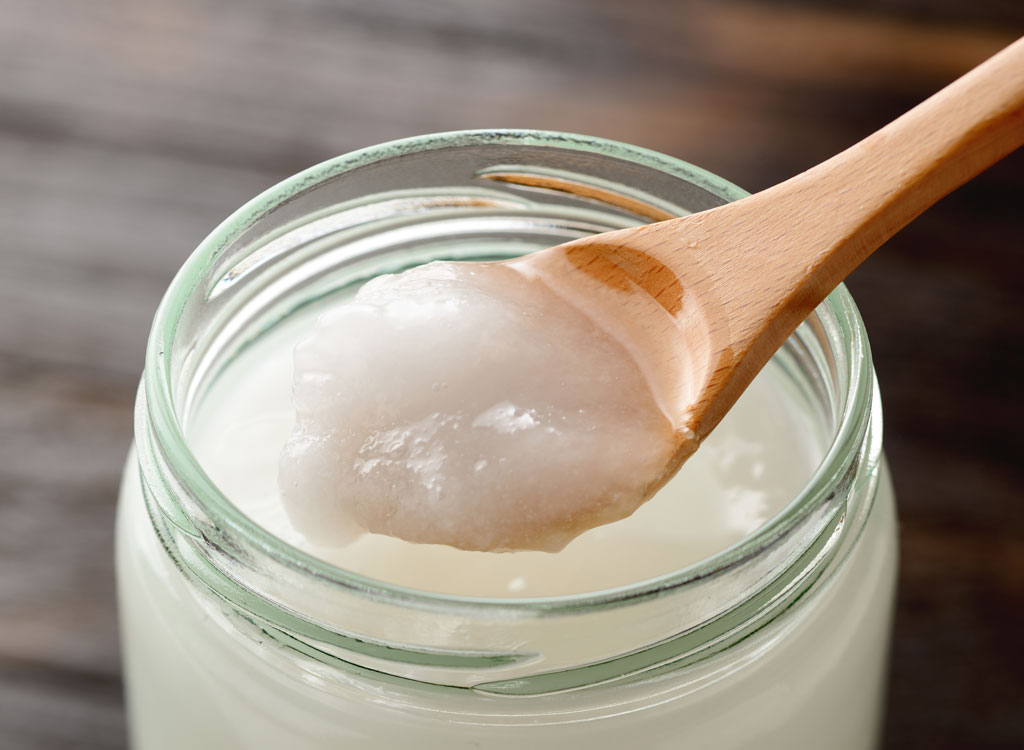
“Use flavorful cooking fats such as olive oil, coconut oil, and butter for intense and rich flavor without the need for added salt.”
— Molly Devine, RD LDN founder of Eat Your Keto and advisor to Remedy Review
Avoid Processed Foods
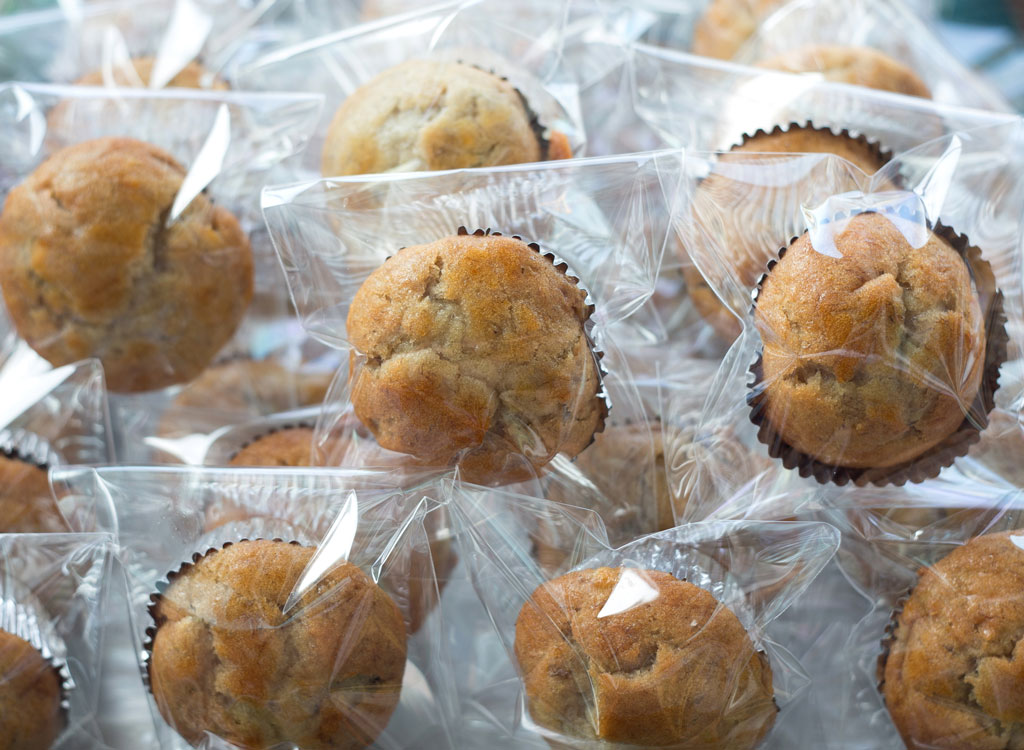
“The majority of the salt we consume comes from pre-packaged and fast foods. Avoiding these and sticking to home-cooked meals will drastically reduce the salt in your diet.”
— Devine
Incorporate More Flavorful Veggies
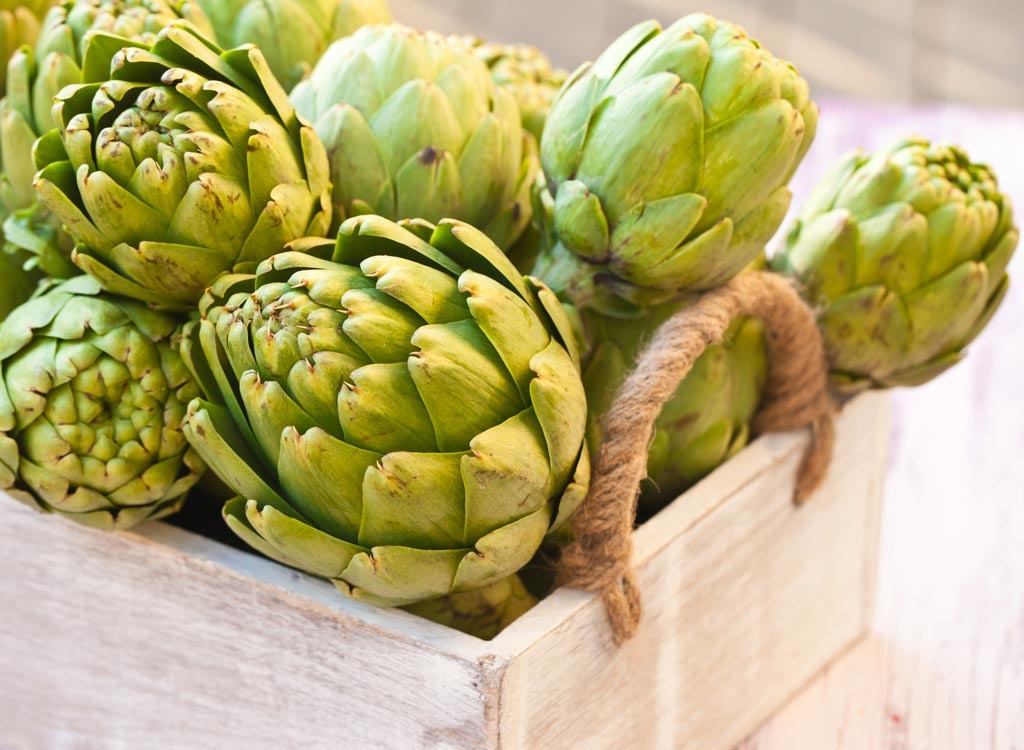
“Fresh herbs like parsley, dill, mint, and cilantro and spices such as turmeric, cumin, cayenne, and black pepper are a great sodium-free way to amp up the flavor complexity as well as the nutritional value of your food. Sautéed onions and garlic are another healthy way to give your food more flavor. Try incorporating vegetables with a saltier flavor profile, such as diced celery and artichokes. Kelp is a salty sea vegetable that is low in sodium. You can buy kelp granule shakers and use it on everything from popcorn to salads to pasta dishes. If you can’t resist using a little salt, you’re much better off using a salt that has color to it, such as Himalayan sea salt, because colored salts contain healthy minerals, whereas ordinary table salt has been processed in a way that strips it of the majority of its mineral content.”
— Jessica Rosen, Certified Holistic Health Coach and Co-Founder of Raw Generation
Check Restaurant Menus Before Eating Out
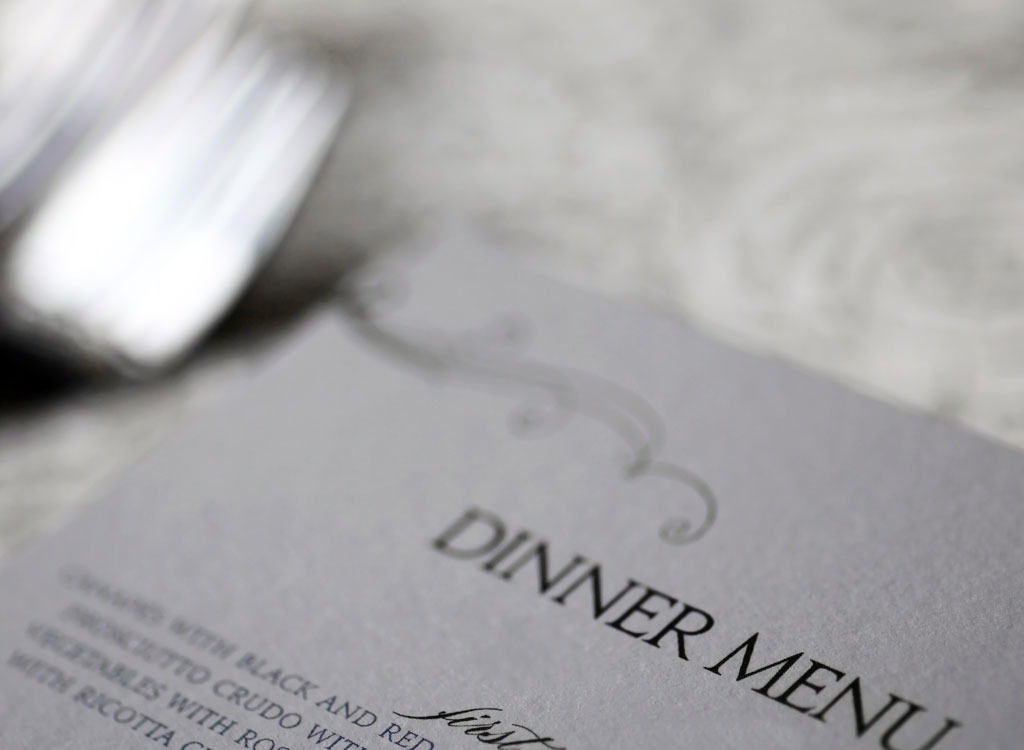
“People who frequent restaurants might be surprised to learn how much sodium is actually in the food they eat, but a recent FDA rule requires chain restaurants with more than 20 locations to label their menus with nutrition information and make it available to consumers. So, before you eat out, visit the restaurant’s website to find the sodium content of your favorite menu items so you can make an informed choice—and a healthy swap—if necessary.”
— Nancy Woodbury, MA, MS, RD, LD/N Owner of Nancy Woodbury Nutrition
Use Tangy Toppings
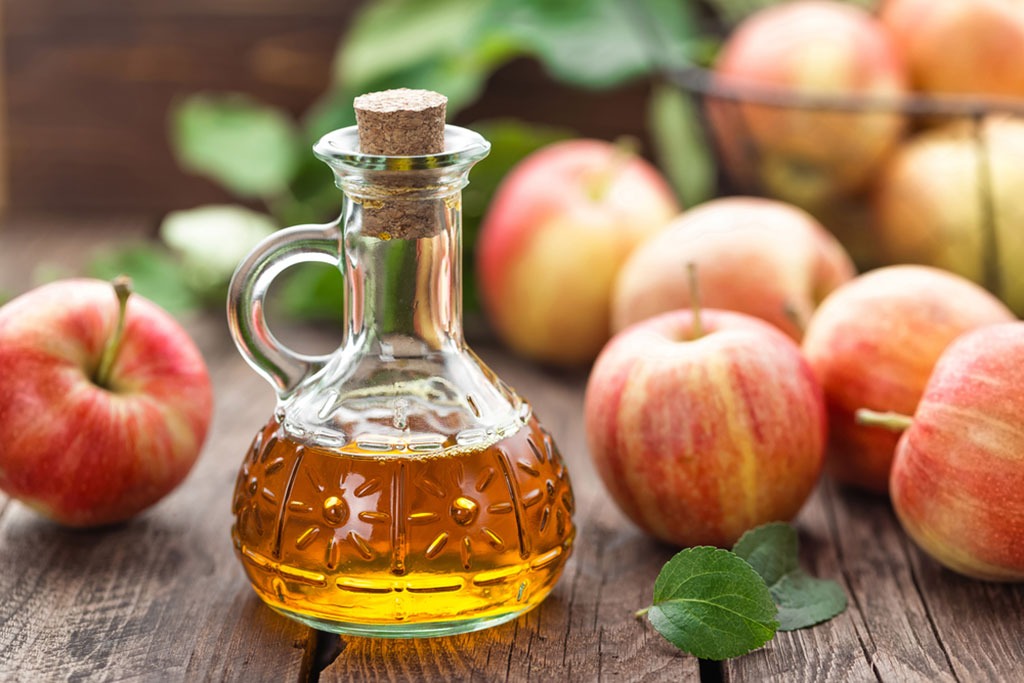
“Brighten the flavor of a dish immediately prior to serving it with citrus zest, a splash of flavored vinegar, or a squeeze of fresh lemon or lime.”
— Woodbury
Beware of Sneaky Culprits
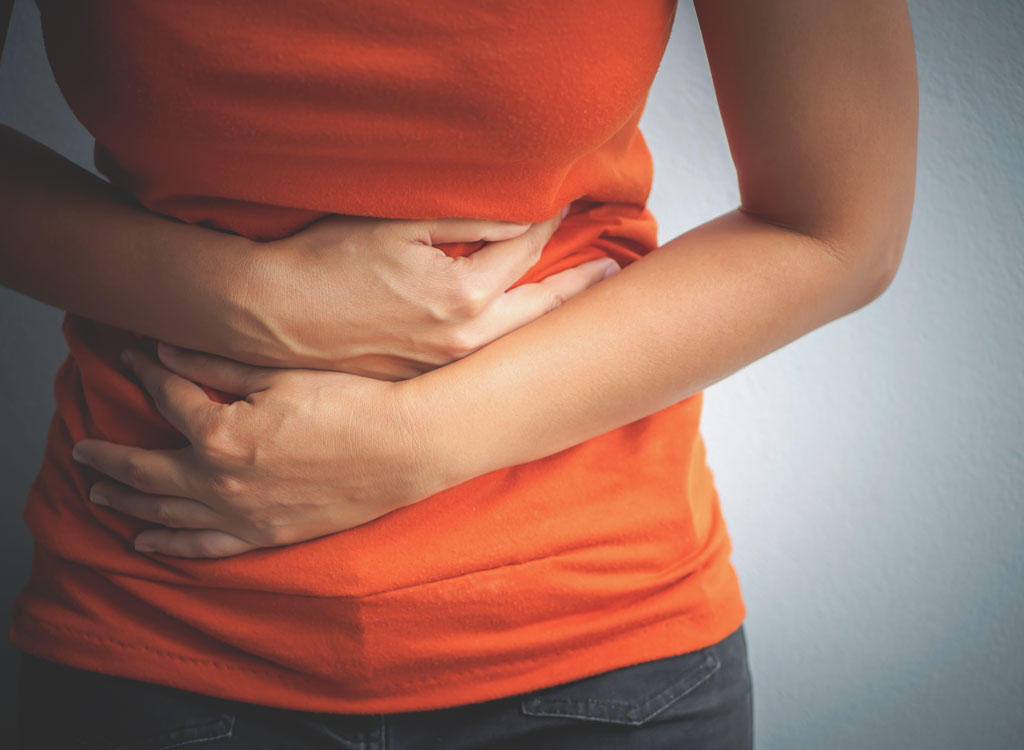
“Excess dietary sodium (more than 2,300 milligrams per day for adults) may cause fluid retention, which raises blood pressure and increases the risk of heart and kidney disease. High-sodium diets have been linked to stomach cancer and can increase urinary calcium loss leading to osteoporosis and the formation of kidney stones. It’s important to scrutinize nutrition labels and eliminate these very high-sodium foods: canned soups, frozen dinners, soy sauce, deli meats, cheese, and processed meats such as bacon and ham. By definition, low-sodium foods have less than 140 milligrams of sodium per serving.”
— Woodbury
Opt For Umami
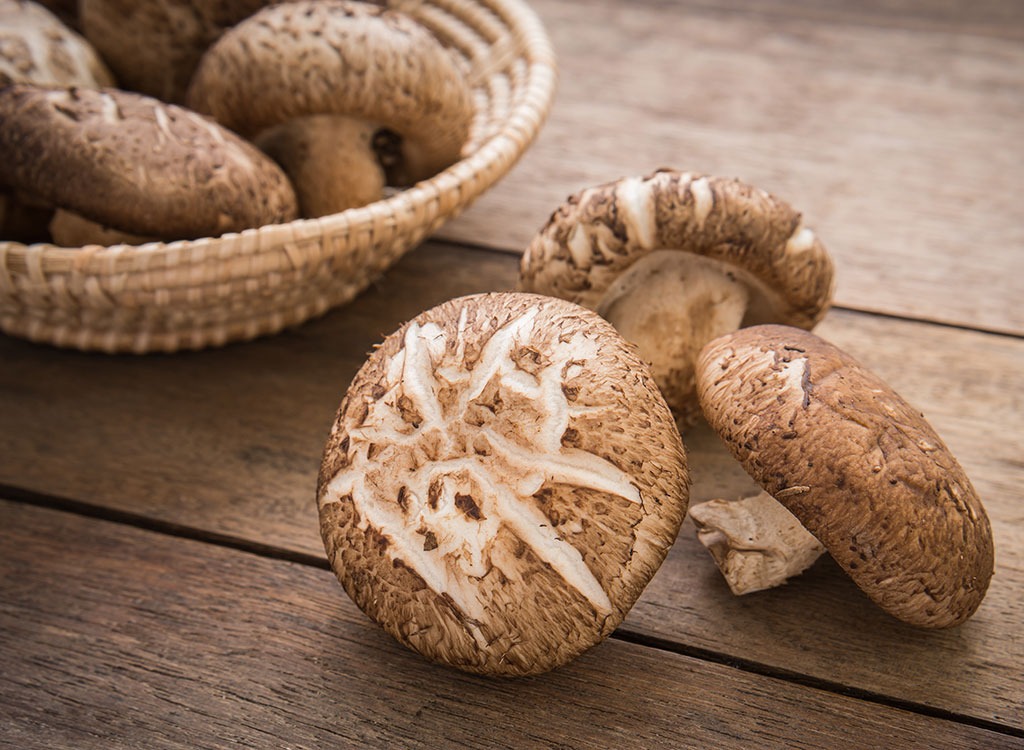
“One of my favorite ways to really increase flavor when I’m using less salt is to use mushrooms, which provide a rich umami flavor. If I don’t want to include actual mushrooms, a mushroom-based low-sodium broth can be used to cook rice or de-glaze a pan of chicken, and it adds such richness!”
— Cassie Berger, MS, RDN
Cut Canned Veggies
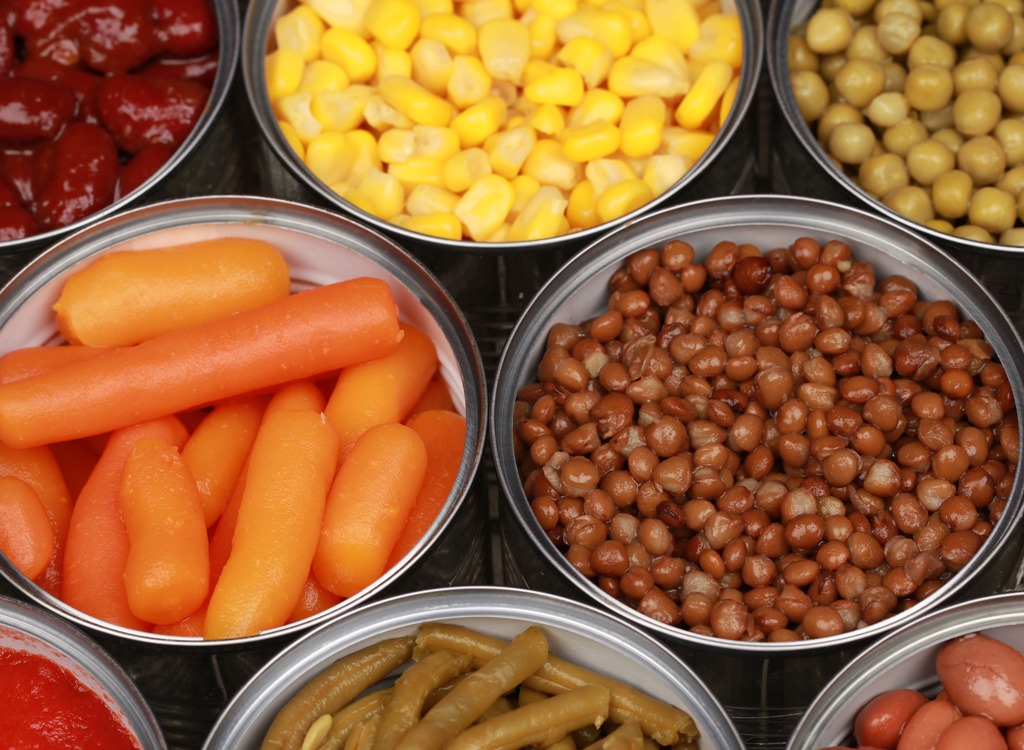
“Canned beans and vegetables can be high in sodium. You don’t have to cut out canned foods completely, but you should look for ones that either state “no salt added” or “reduced sodium” on the packaging. Always rinse your canned items under water to get any excess salt off. Making these changes will lead to less sodium in your meals.”
— Meredith Price, MS, RD, CDN, Priceless Nutrition & Wellness
Nix Breakfast Meats
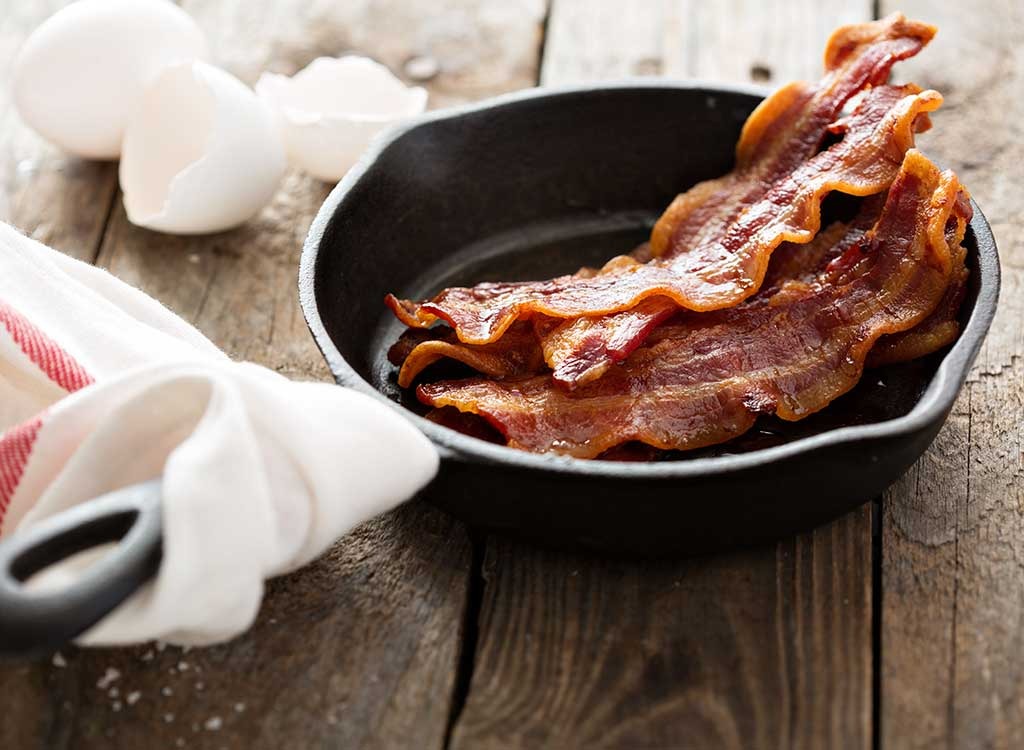
“Cured breakfast meats like bacon, sausage, and ham are packed with salt. Three strips of bacon can have 20 percent of your daily salt allowance! Don’t be fooled by turkey bacon—though it’s lower in saturated fat, it’s higher in sodium.”
— Kelsey Peoples, MS, RDN
Skip Frozen Dinners
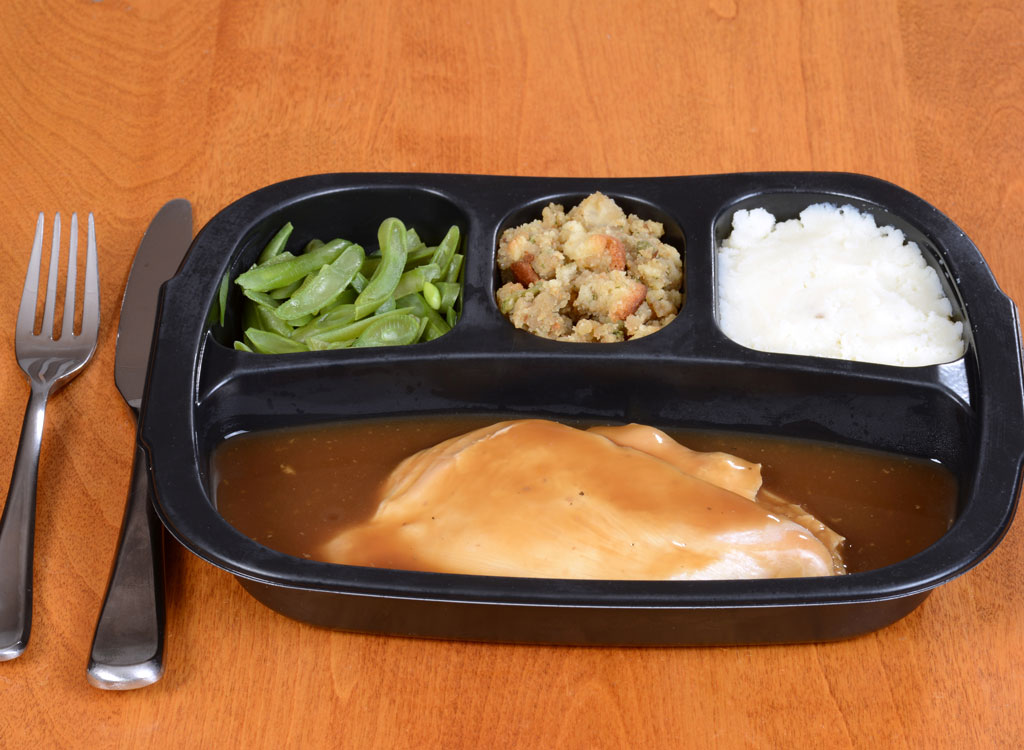
“If you’re someone who eats frozen meals, the best step would be to cut them out completely. However, they’re convenient and a lot of people rely on them. Always check the nutrition facts label, and choose ones that have less than 400 milligrams of sodium per serving.”
— Price
Skip Sandwiches
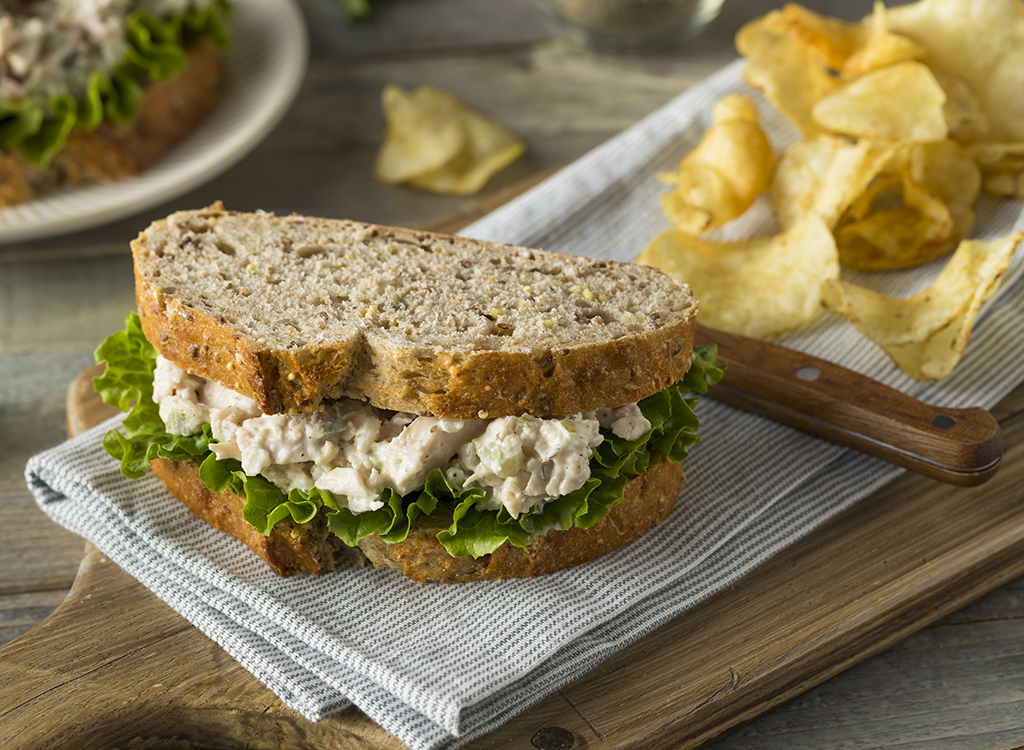
“Deli meat is loaded with sodium to help it stay fresh longer, so three ounces of turkey or ham usually has about 1,200 milligrams of sodium (that’s 60 percent of your entire day’s limit!). Adding just one tablespoon of ketchup or mustard will contribute about another 150 milligrams of sodium, plus each pickle spear has 360 milligrams. Try switching to a low-salt version if you’re going to eat deli meat, and top with a little oil and vinegar instead.”
— Peoples
Pass on Pizza
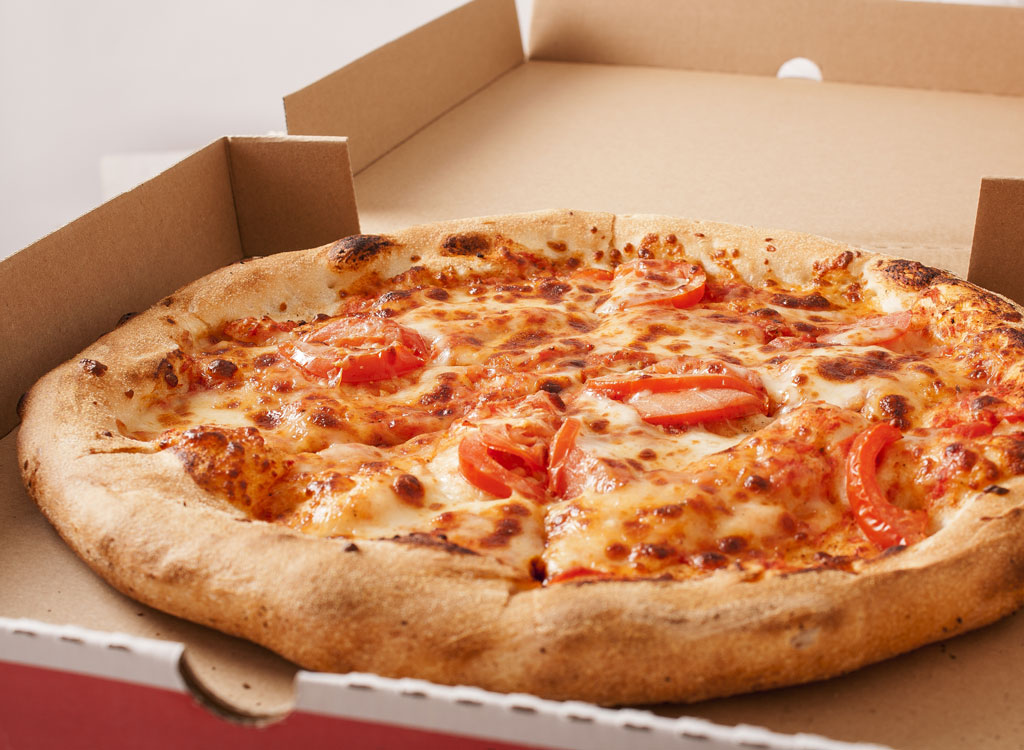
“It’s America’s beloved grab-and-go meal, but the tomato sauce, processed cheese, and savory crust combo can pack over 600 milligrams of sodium per slice—and that’s before you add salty toppings like pepperoni or olives.”
— Peoples
Focus on Whole Foods
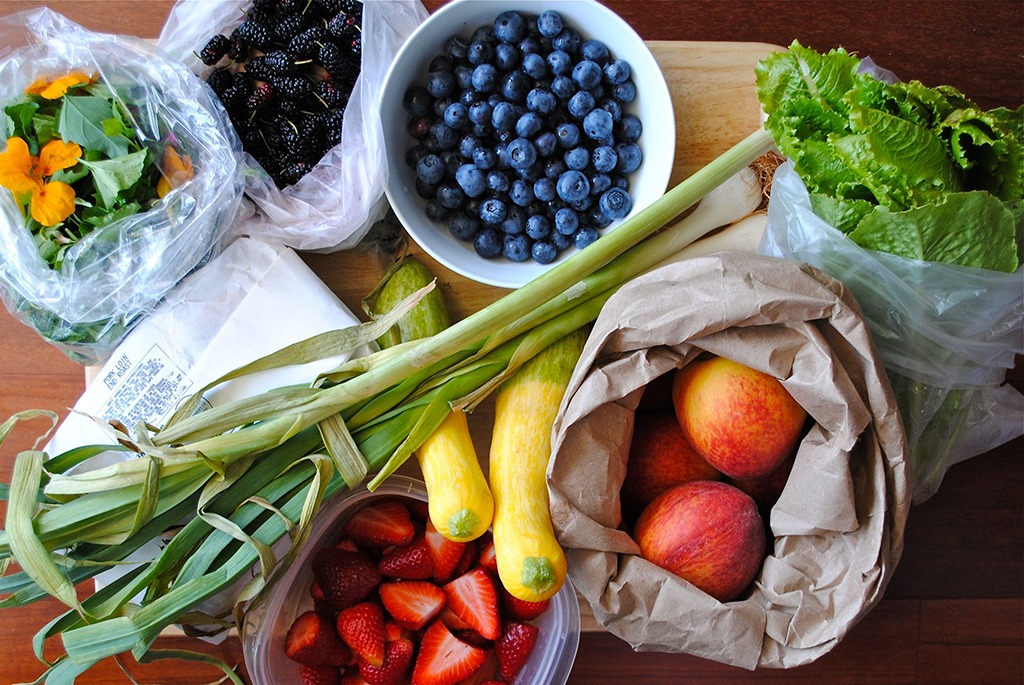
“Consume and cook with whole food ingredients such as fruits, vegetables, grains, meats, and heart-healthy oils most often. These foods are naturally low in sodium, and many of them are high in potassium, which is a great combination for keeping blood pressure at a healthy level. These foods are also great sources of fiber, protein, vitamins, minerals, and healthy fats, so they support health overall. And if using these types of foods in your cooking, adding a little salt isn’t necessarily a bad thing because the foods themselves are so low in sodium (and usually you’re swapping these whole foods in instead of something more processed that likely has more salt).”
— Julie Andrews, RD and chef
Compare Similar Products’ Nutrition
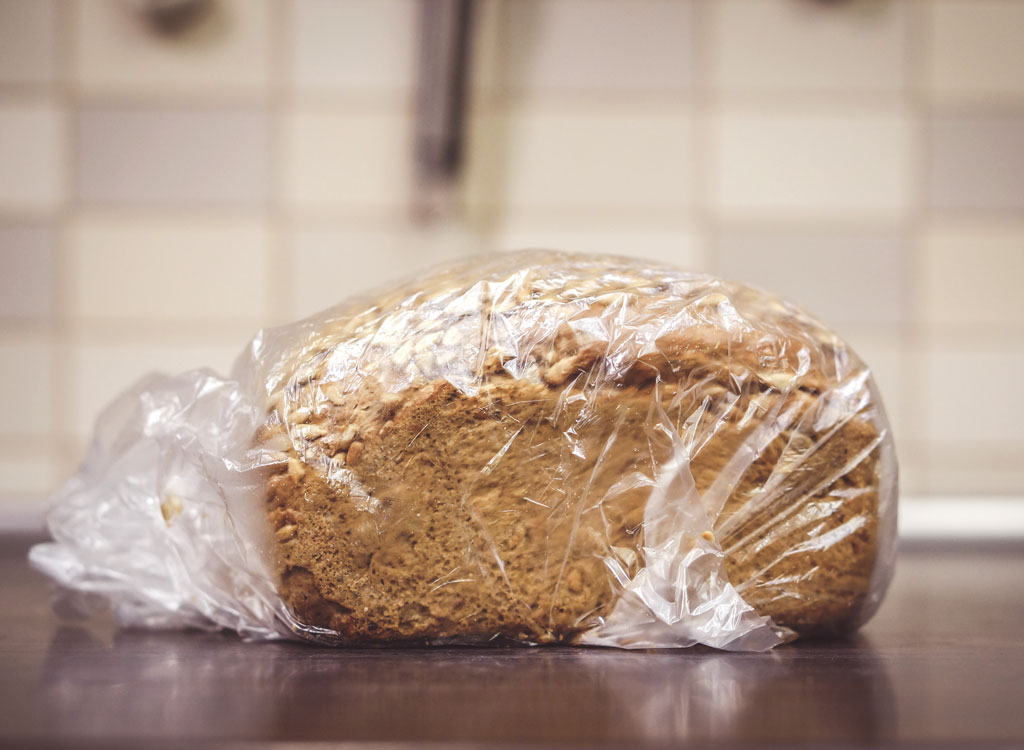
“Compare the nutrition facts (sodium content) of foods like bread, canned products, and snacks with similar products, and choose the one with less sodium. For example, one brand or variety might have 200 milligrams of sodium per serving, and another might have 450 milligrams of sodium per serving. Opt for the product with 200 milligrams.”
— Andrews
Consume High-Potassium Foods
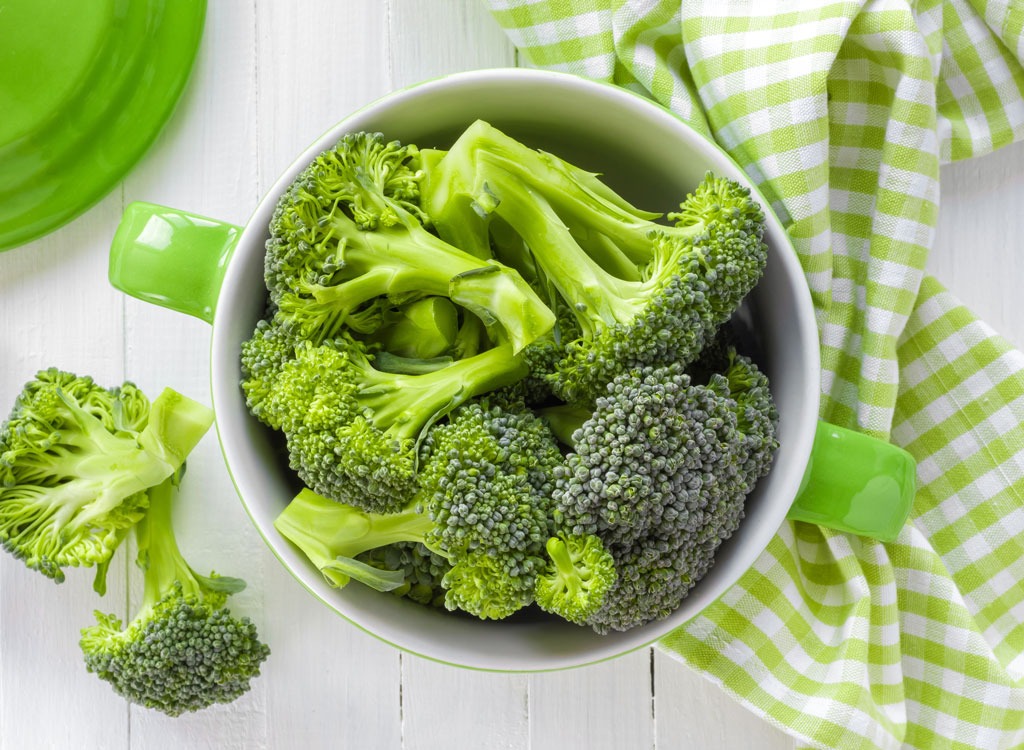
“Consume foods high in potassium, and drink adequate water. Both of these things can help keep your electrolytes in balance (and sodium is one electrolyte). High potassium foods include potatoes, melons, greens, broccoli, and bananas.”
— Andrews
Use the 1-to-1 Rule
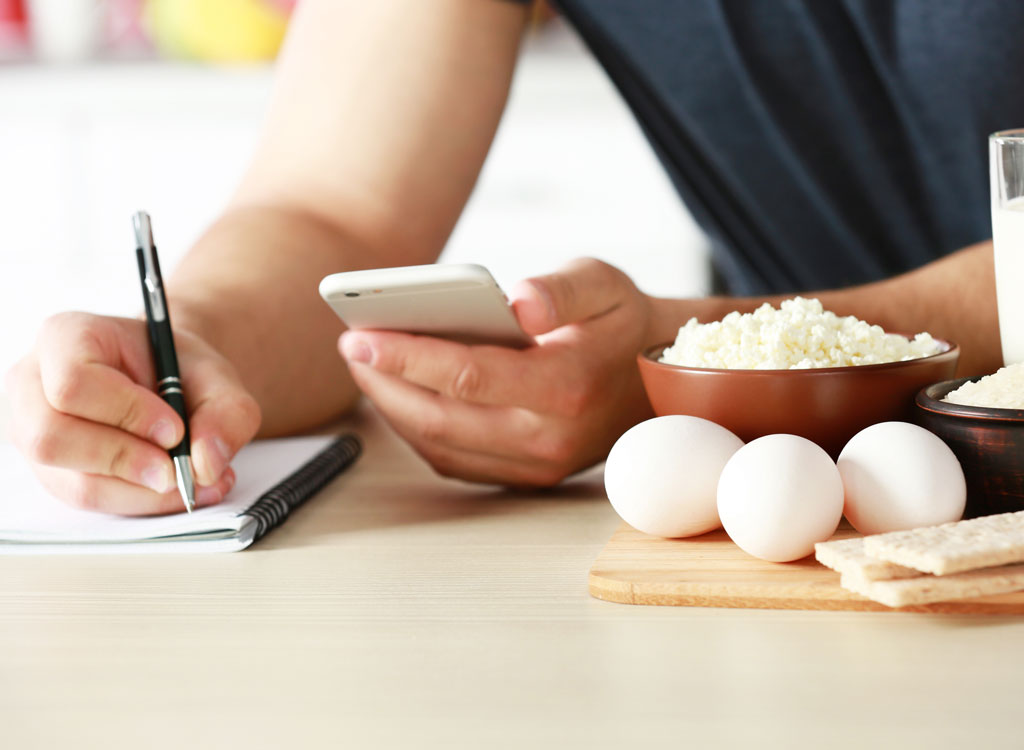
“To limit your sodium consumption to optimal levels of 1,500 milligrams or less a day, the doctors and dietitians at the Pritikin Longevity Center & Spa recommend the ‘one milligram of sodium per one calorie’ rule. That is, curb your intake of foods that have more than one milligrams of sodium per calorie.”
— Dr. Danine Fruge, Medical Director at Pritikin Longevity Center
Skip the Soup
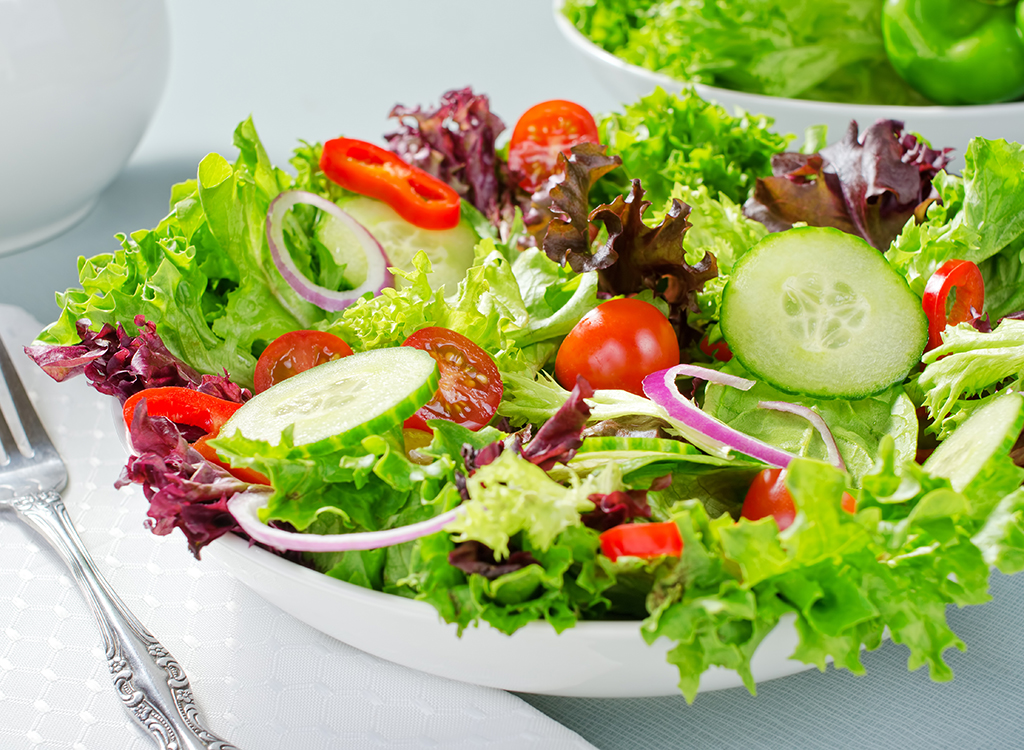
“Restaurant soups, even those full of healthy ingredients like veggies and beans, are notoriously high in sodium—they often contain over 2,000 milligrams per bowl. For a first course, you’re far better ordering a salad full of fresh vegetables.”
– Fruge
Salt Recipes at the End
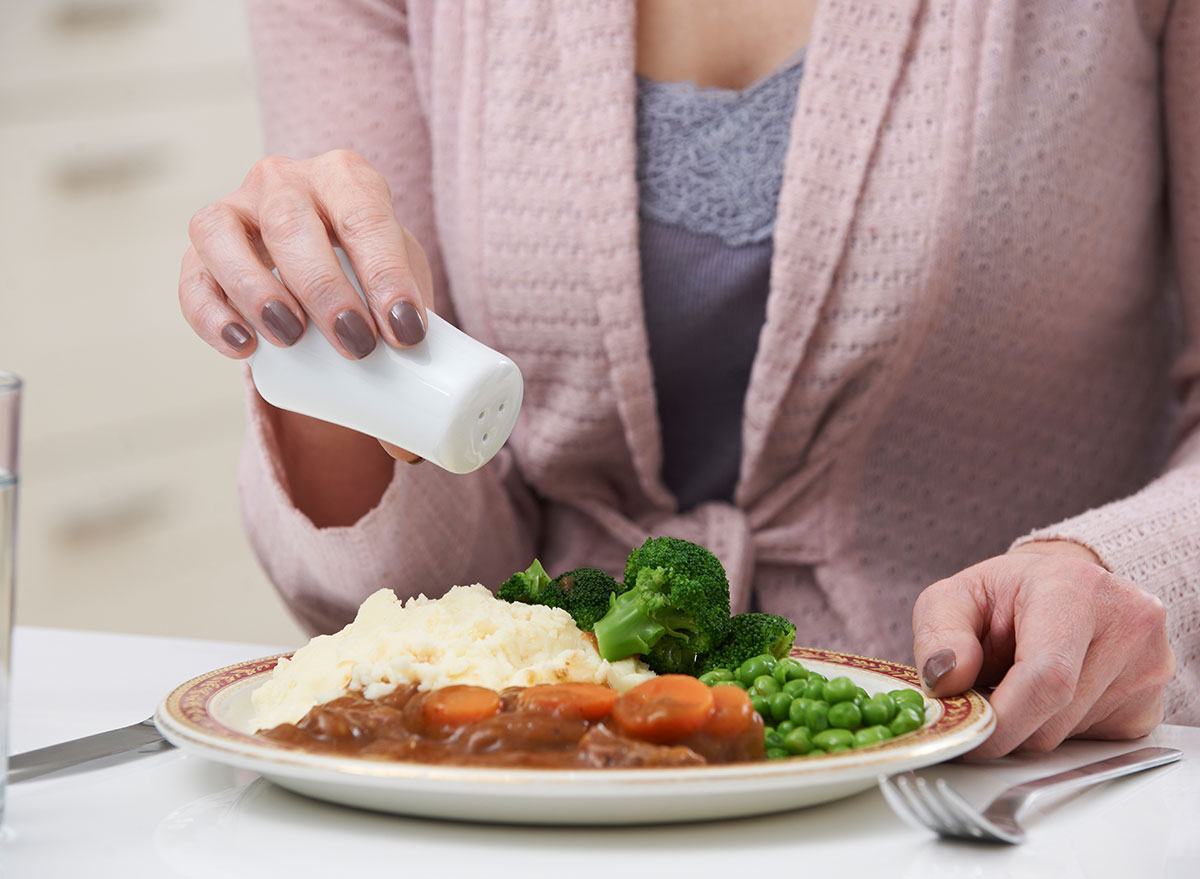
“When cooking, instead of adding salt at the beginning like indicated in most recipes, add salt at the very end, or even better, in your plate. When cooking, salt and spices lose some of their flavors, so, for the same great taste, you will need more salt (as well as more spices and herbs) if you add them at the beginning.”
— Stella Loichot, ACE-Certified Health Coach
Swap Salt With Brewers Yeast or Nutritional Yeast
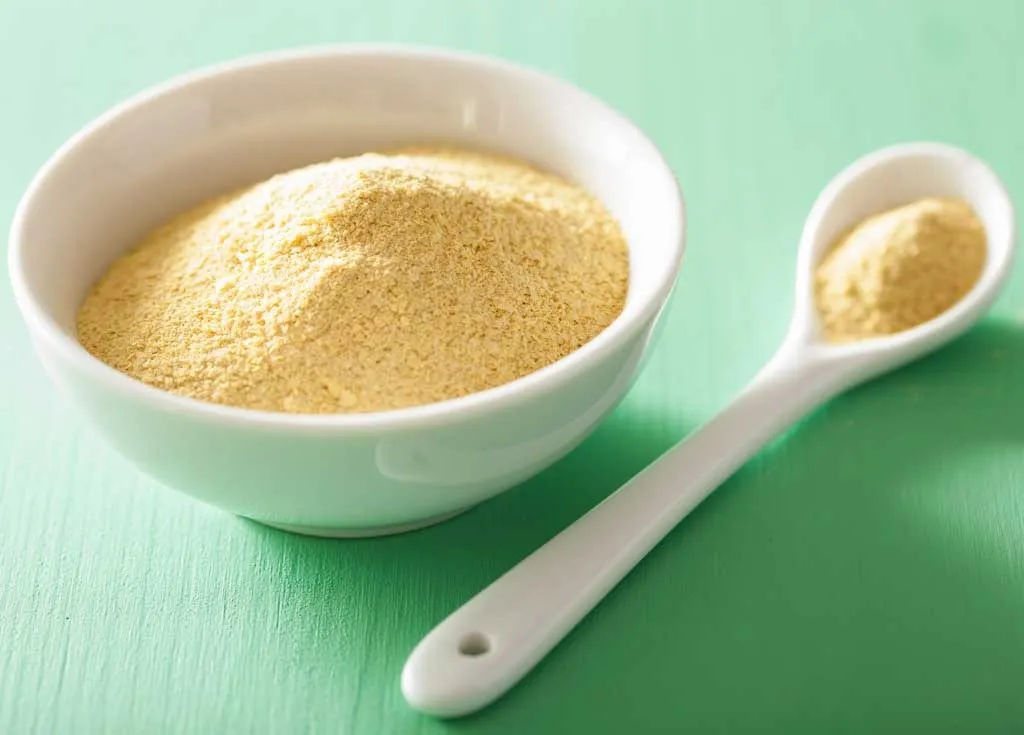
“The savory, cheese-like taste of brewer’s yeast or nutritional yeast is ideal for adding flavor without salt. It’s great for homemade dressings, pasta sauce, and sprinkling on snacks, and it’s loaded with vitamins, minerals, and antioxidants.”
— Lindsey Bristol, MS, RD at Swanson Health
Focus on Aroma

“The majority of what we consider ‘taste’ is actually thanks to the sense of smell. So, make food smellier—in a good way! For instance, finish dishes with highly aromatic ingredients, like garlic, fresh mint, or a stinkier cheese, and then go ahead and use at least a pinch less salt in the dish.”
— Jackie Newgent, RDN, CDN
Dilute Broth
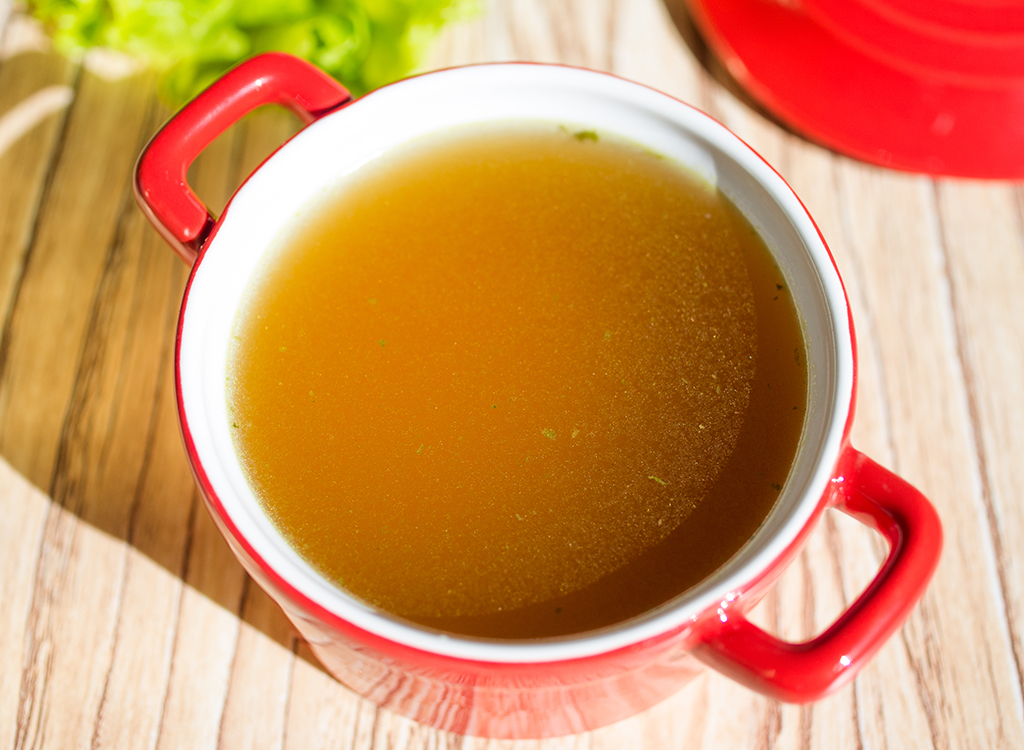
“If one bouillon cube calls for two cups of water, I find that no one notices when it’s diluted down to four cups of water for one bouillon cube. Consider adding more onion, garlic, celery, or black pepper to the soup to add more flavor if needed. Soup can be incredibly high in salt, which may increase blood pressure. By adding a lot of potassium-rich vegetables in the soup and diluting the broth, you’ll decrease that likelihood.”
— Morgan Bettini, MS, RDN, E-RYT
Ask for Sauce on the Side
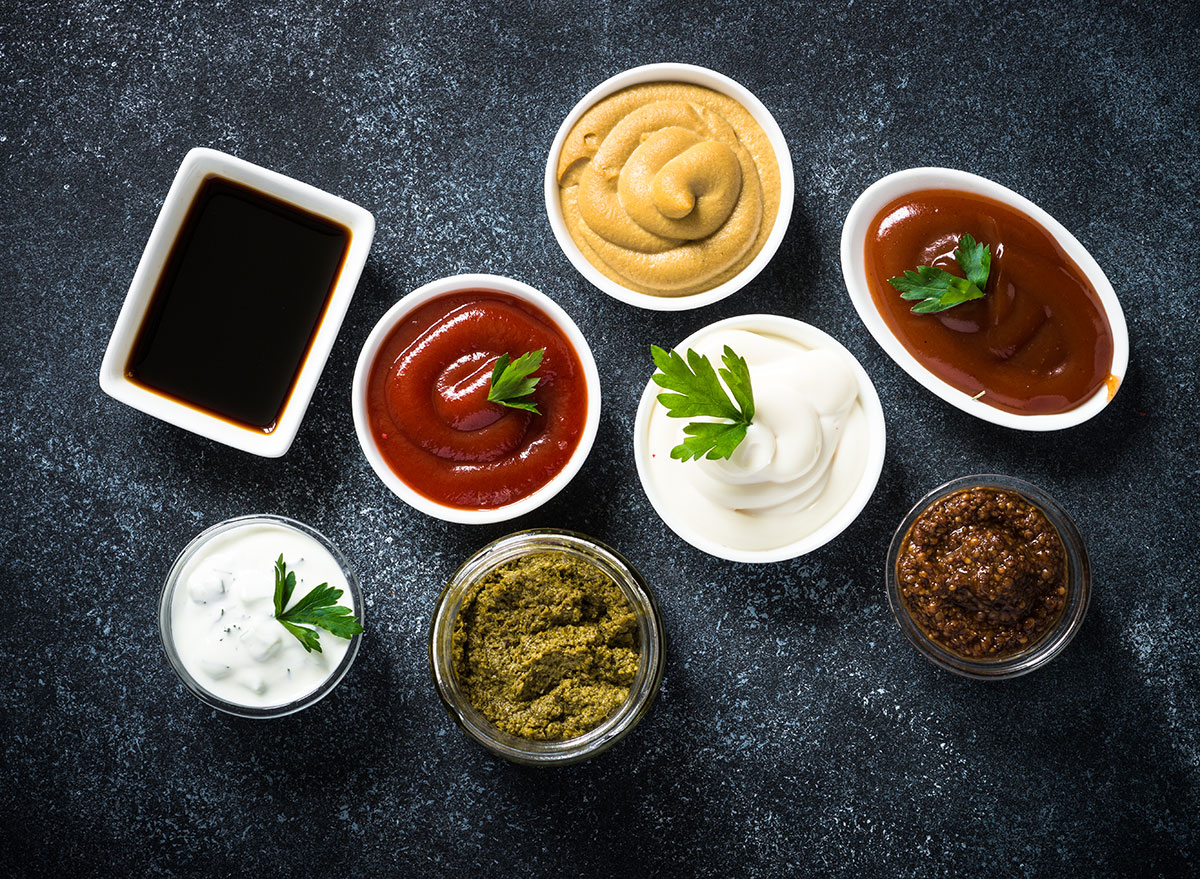
“When dining out, asking for sauces and dressings on the side can help. Sauces and salad dressings tend to be huge contributors to our daily sodium intake, especially when we eat out. When you ask for sauces on the side, you can control how much of the sauce, if any at all, you add to your food. This can make a huge difference!”
— Krikhely
Make Changes Slowly
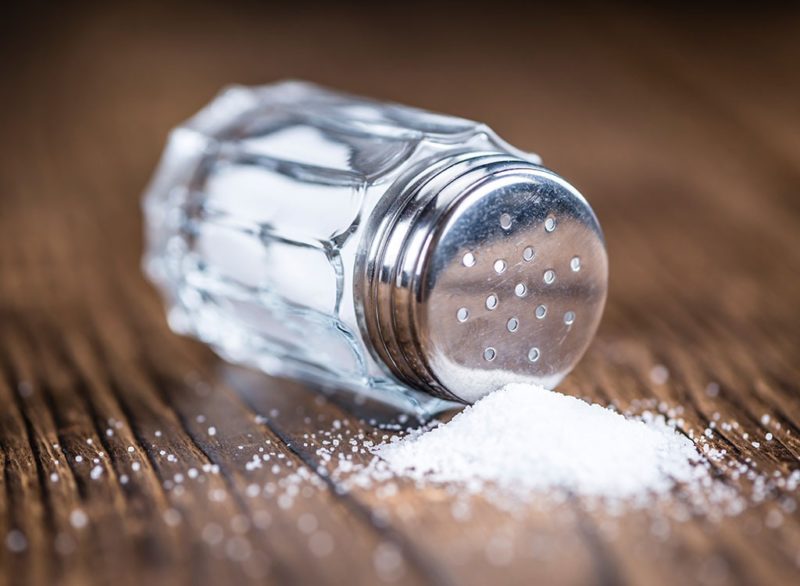
“Making small changes can add up and result in large changes over time. You don’t have to revamp your diet and eliminate sodium overnight. If you’re used to adding lots of salt to your food, add less and incrementally decrease the amount of salt you add. Over time, your taste buds will get used to the small decreases, and you’ll be able to significantly decrease your salt intake.”
— Krikhely

